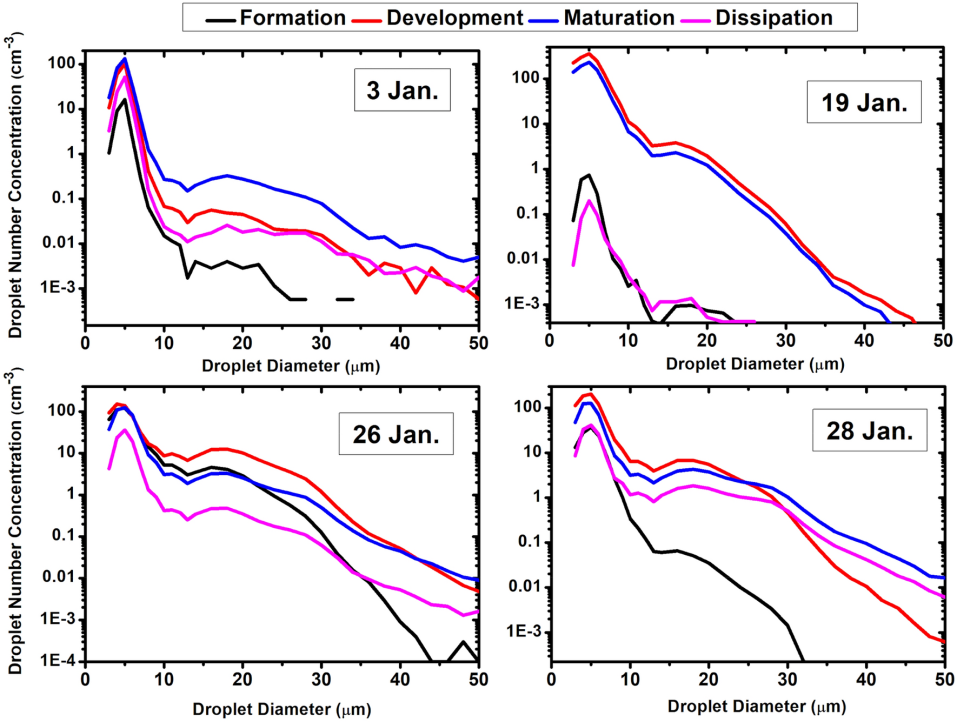Scientist Profile

Dr. Sandeep Dnyandeo Wagh
Designation
: Scientist B
Phone
: +91-(0)20-25904260
Fax
: -
Email ID
: sandeep[dot]wagh[at]trompmet[dot]res[dot]in
| Degree | University | Year | Stream |
|---|---|---|---|
| PhD | University of Pune | 2018 | Atmospheric Sciences |
| M.Tech | University of Pune | 2012 | Atmospheric Sciences |
| M.Sc. | University of Pune | 2007 | Physics |
 Aerosol-Cloud interaction
Aerosol-Cloud interaction
 Fog microphysics
Fog microphysics
 Aerosol-fog interaction
Aerosol-fog interaction
 Cloud Physics
Cloud Physics
 Ice Nucleation
Ice Nucleation
 Laboratory experiment in Aerosol-Fog interaction and Ice Nucleation
Laboratory experiment in Aerosol-Fog interaction and Ice Nucleation
| Award Name | Awarded By | Awarded For | Year |
|---|---|---|---|
| Rajiv Gandhi National Research Fellowship | University Grant Commission (UGC) - Ministry of Human Resource Development | PhD | 2012 |
| Year | Designation | Institute |
|---|---|---|
| 2023-Present | Scientist-B | Indian Institute of Tropical Meteorology, Pune |
| 2022-2023 | Project Scientist- III | Indian Institute of Tropical Meteorology, Pune |
| 2018-2021 | Post-Doctoral Researcher | Department of Civil and Environmental Engineering and Earth Sciences , University of Notre Dame , USA |
| 2018-2018 | Project Scientist- I | Indian Institute of Tropical Meteorology, Pune |
Research Highlight

Research Title
Development of visibility equation based on fog microphysical observations and its verification using the WRF model
Research description
The campaign mode observational program 'Winter Fog Experiment' (WiFEX) was set up at the Indira Gandhi International Airport (IGIA), New Delhi, during the winter months of 2016–17 and 2017–18. Using the WiFEX data, in this study, we examine the microphysical structure of fog formed in a polluted environment and attempt to predict visibility (Vis) using the fog index approach. The droplet spectrum shows bi-modal distribution and dominance of smaller droplets in the 3–7 µm range. For most fog cases, the droplet spectrum extends up to 50 µm. The mature phase of the fog depicts a relatively increased population of droplets in the higher-sized bins, highlighting the formation of larger droplets. Fog index-based visibility parameterization has been developed to diagnostically compute visibility for the different categories of fog events. Out of 14 CAT-IIIB and 19 CAT-IIIC fog events, the 'WiFEX-in' could predict seven CAT-IIIB and 12 CAT-IIIC fog events, respectively. It is found that the observed and predicted fog hour differences were related to the errors in the fog onset, dissipation, and magnitude of predicted liquid water content during CAT-IIIB and CAT-IIIC events and the same are discussed.


